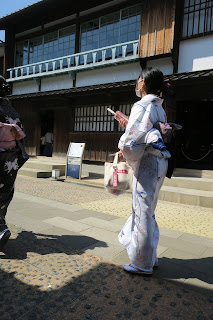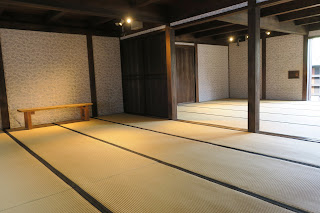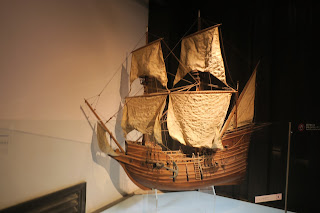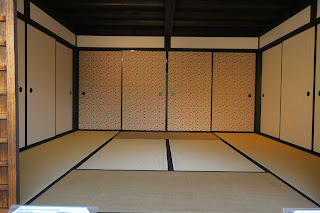Dejima (Japanese: "exit island") or Deshima, in the 17th century also called
Tsukishima ("built island"), was an artificial island off Nagasaki, Japan that
served as a trading post for the Portuguese (1570–1639) and subsequently the
Dutch (1641–1854). For 220 years, it was the central conduit for foreign trade
and cultural exchange with Japan during the isolationist Edo period
(1600–1869), and the only Japanese territory open to Westerners.
|
Bridge connecting Dejima to Nagasaki.
In the top photo we can see the current bridge that connects Dejima to
Nagasaki. In the photo below we can see a model of how the bridge used
to be.
-
Spanning 120 m × 75 m (390 ft × 250 ft) or 9,000 m2 (2.2 acres),
Dejima was created in 1636 by digging a canal through a small
peninsula and linking it to the mainland with a small bridge.
|
|
Main Gate.
The small bridge was guarded on both sides, and with a gate on the
island side. The islanders were watched by several Japanese officials,
gatekeepers, night watchmen, and a supervisor (otona) with about
fifty subordinates.
|
|
West side of Main Street.
|
|
Captain House.
The chief VOC (Vereenigde Oostindische Compagnie) trading post office in
Japan was called the Opperhoofd by the Dutch, or Kapitan (from
Portuguese capitão) by the Japanese. This descriptive title did not
change when the VOC went bankrupt and trade with Japan was continued by
the Dutch Indies government at Batavia. According to the Sakoku rules of
the Tokugawa shogunate, the VOC had to transfer and replace the
opperhoofd every year with a new one. And each opperhoofd was expected
to travel to Edo to offer tribute to the shogun.
-
Opperhoofd is a Dutch word (plural opperhoofden) which
literally means 'supreme head'. The Japanese used to call the trading
post chiefs kapitan which is derived from Portuguese
capitão (cf. Latin caput, head). In its historical
usage, the word is a gubernatorial title, comparable to the English
Chief factor, for the chief executive officer of a Dutch factory in
the sense of trading post, as led by a Factor, i.e. agent.
|
|
Kitchen.
The Dutch employees gathered in the Chief Factor's Residence twice a day
for lunch and dinner, and their meals were prepared here. This was one
of the only buildings on Dejima built by Dutch funding. Southeast Asian
and Japanese servants assisted the Dutch in cooking, and meat,
vegetables and other unusual foods were supplied from the animal pens
and gardens on the island.
|
|
First Ship Captain’s Quarters.
|
|
Scales at the west end of Main Street.
|
|
Portuguese sailing ship Caracca Atlantica model.
A carrack (Portuguese: nau; Spanish: nao; Catalan:
carraca; Croatian: karaka) is a three- or four-masted
ocean-going sailing ship that was developed in the 14th to 15th
centuries in Europe, most notably in Portugal and Spain.
|
|
Dutch sailing ship Friesland model.
Friesland was a second rank vessel with 80 guns built around 1663, part
of the great fleet of the United Provinces of Holland.
|
|
East side of Main Street.
|
|
Dogura.
Originally, the Dutch mainly traded in silk, cotton, and materia medica
from China and India. Sugar became more important later. Deer pelts and
shark skin were transported to Japan from Formosa, as well as books,
scientific instruments and many other rarities from Europe. In return,
the Dutch traders bought Japanese copper, silver, camphor, porcelain,
lacquer ware, and rice.
|
|
Former Nagasaki Inside and Outside Club.
|
|
Former Dejima Protestant Seminary.
|
|
Miniature Model of Dejima.
|
See also
Source
Location
Hotel Monterey Nagasaki
Oura Cathedral
Glover Garden
Nagasaki Dutch Slope
Twenty-Six Martyrs Museum and Monument
St. Philip Nishizaka Church

































